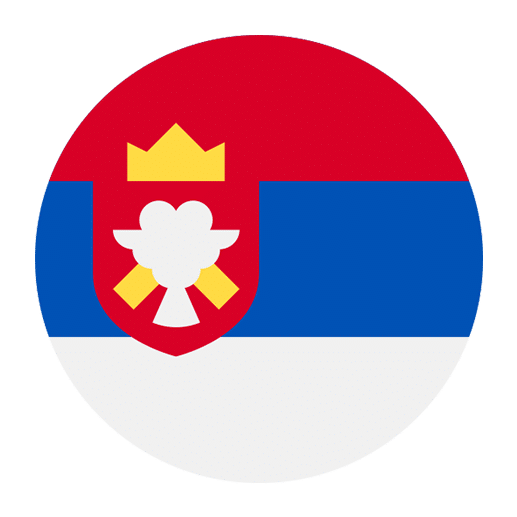The Serbian language, part of the South Slavic group of the Slavic branch of the Indo-European language family, is rich in history, culture, and linguistic intricacies. For English speakers interested in understanding Serbian linguistic research, a comprehensive exploration of the language’s structure, evolution, and current scholarly endeavors is essential. This article aims to provide a detailed overview of Serbian linguistic research, touching on various aspects such as phonology, morphology, syntax, semantics, and sociolinguistics.
Historical Context of Serbian Linguistic Research
The study of the Serbian language has evolved over centuries, with significant contributions from both native and international scholars. The early linguistic research in Serbia was largely influenced by the development of Slavic philology in the 19th century. Vuk Stefanović Karadžić, a prominent Serbian philologist and linguist, played a crucial role in the standardization of the Serbian language. His work in the 19th century laid the foundation for modern Serbian linguistic research.
Karadžić’s efforts were primarily focused on the phonetic principle of orthography, which aimed to align the written language closely with the spoken form. This principle has remained a cornerstone of Serbian orthography. Additionally, Karadžić collected and published a vast array of folk literature, which provided valuable insights into the vernacular language and cultural heritage of Serbia.
Phonology
Phonology, the study of the sound system of a language, is a critical area of linguistic research. Serbian phonology is characterized by several distinct features that differentiate it from other Slavic languages.
Vowel System
Serbian has a relatively simple vowel system consisting of five primary vowels: /a/, /e/, /i/, /o/, and /u/. These vowels can be either short or long, with vowel length playing a significant role in distinguishing meaning. For example, the words “grad” (city) and “graad” (hail) differ only in the length of the vowel.
Consonant System
The consonant system in Serbian is more complex, featuring a range of voiced and voiceless stops, fricatives, nasals, and approximants. One notable feature of Serbian consonantism is the presence of palatalization, where consonants are pronounced with a simultaneous raising of the tongue towards the hard palate. This phenomenon is particularly prevalent in the pronunciation of certain consonant clusters.
Accentuation
Accentuation in Serbian is another area of interest for phonologists. Serbian is a pitch-accent language, meaning that the pitch or tone of the syllable can affect the meaning of the word. There are four possible accents in standard Serbian: short falling, short rising, long falling, and long rising. For instance, the word “ruka” can mean either “hand” or “arm,” depending on the accent.
Morphology
Morphology, the study of the structure and formation of words, is another key area of linguistic research in Serbian. Serbian morphology is highly inflectional, with nouns, pronouns, adjectives, and verbs undergoing various changes to indicate grammatical categories such as case, number, gender, tense, aspect, and mood.
Noun Declension
Serbian nouns are declined based on seven cases: nominative, genitive, dative, accusative, vocative, instrumental, and locative. Each case serves a specific syntactic function, and the endings of nouns change accordingly. For example, the noun “student” (student) changes to “studenta” in the genitive singular and “studentima” in the dative plural.
Verb Conjugation
Verbs in Serbian are conjugated to reflect tense, aspect, mood, person, and number. The language distinguishes between perfective and imperfective aspects, which indicate whether an action is completed or ongoing. For example, the verb “pisati” (to write) has the imperfective form “pisati” and the perfective form “napisati.” Additionally, Serbian verbs are conjugated in the present, past, and future tenses, with each tense having distinct conjugation patterns.
Syntax
Syntax, the study of sentence structure and the arrangement of words within sentences, is another crucial aspect of Serbian linguistic research. Serbian syntax is characterized by a relatively free word order, primarily due to its inflectional nature. However, the most common word order is Subject-Verb-Object (SVO).
Word Order
While the SVO word order is common, Serbian allows for various permutations of word order to emphasize different parts of the sentence or to convey specific pragmatic meanings. For example, the sentence “Marko voli Anu” (Marko loves Ana) can be rearranged as “Anu voli Marko” to emphasize that it is Ana whom Marko loves.
Clitic Placement
One of the unique features of Serbian syntax is the placement of clitics, which are unstressed words that attach to a host word. Clitics in Serbian include auxiliary verbs, reflexive pronouns, and short forms of personal pronouns. The placement of clitics follows specific rules, often appearing in the second position of the clause. For instance, in the sentence “Ja sam ga video” (I saw him), the auxiliary verb “sam” and the pronoun “ga” are clitics.
Semantics
Semantics, the study of meaning in language, is a field that delves into how meaning is constructed and interpreted in Serbian. Researchers in this area explore various semantic phenomena, including polysemy, synonymy, antonymy, and idiomatic expressions.
Polysemy
Polysemy refers to the phenomenon where a single word has multiple related meanings. In Serbian, the word “ključ” can mean both “key” (as in a physical key) and “solution” (as in the key to a problem). Understanding polysemy is essential for grasping the nuances of the language.
Idiomatic Expressions
Idiomatic expressions in Serbian often pose a challenge for language learners due to their figurative meanings. For example, the phrase “pasti s Marsa” (to fall from Mars) means to be completely unaware of something. Research in this area aims to catalog and explain such expressions, providing valuable insights for both native speakers and learners.
Sociolinguistics
Sociolinguistics, the study of the relationship between language and society, is a vital component of Serbian linguistic research. This field examines how social factors such as age, gender, education, and regional background influence language use and variation.
Regional Dialects
Serbian is spoken in various regions, each with its own distinct dialect. The major dialectal divisions are based on the pronunciation of the historical Slavic phoneme *jat. The main dialect groups are Štokavian, Kajkavian, and Čakavian, with Štokavian serving as the basis for standard Serbian. Research into these dialects provides insights into the linguistic diversity within Serbia.
Language and Identity
Language plays a crucial role in the formation of national and cultural identity. In Serbia, the use of the Cyrillic and Latin scripts is a significant sociolinguistic issue. While both scripts are officially recognized, the choice of script can convey political and cultural affiliations. Sociolinguistic research explores these dynamics, shedding light on how language reflects and shapes social identities.
Contemporary Serbian Linguistic Research
The field of Serbian linguistic research continues to evolve, with contemporary scholars exploring new areas and employing modern methodologies. Advances in computational linguistics, psycholinguistics, and corpus linguistics have opened up new avenues for research.
Computational Linguistics
Computational linguistics involves the use of computer algorithms and models to analyze and process language data. In Serbian, computational linguistics has led to the development of various tools and resources, such as language corpora, automatic speech recognition systems, and machine translation applications. These technological advancements have significant implications for language learning, translation, and natural language processing.
Psycholinguistics
Psycholinguistics examines the cognitive processes underlying language comprehension and production. Research in this area explores how Serbian speakers acquire, process, and produce language, providing insights into the mental mechanisms that support linguistic abilities. Studies on bilingualism, language acquisition in children, and the effects of aging on language are some of the key areas of investigation.
Corpus Linguistics
Corpus linguistics involves the analysis of large collections of written or spoken language data (corpora) to uncover patterns and trends. In Serbian, corpus linguistics has been instrumental in creating comprehensive language databases that serve as valuable resources for researchers, educators, and language learners. These corpora provide empirical data for studying language usage, frequency of word forms, collocations, and syntactic structures.
Applications of Serbian Linguistic Research
The findings of Serbian linguistic research have practical applications in various fields, including education, language policy, translation, and technology.
Language Education
Insights from linguistic research inform the development of effective language teaching methodologies and materials. Understanding the phonological, morphological, syntactic, and semantic features of Serbian helps educators design curricula that address the specific needs of learners. Additionally, research on second language acquisition provides strategies for teaching Serbian as a foreign language.
Language Policy
Linguistic research contributes to the formulation of language policies that promote linguistic diversity and preserve cultural heritage. In Serbia, language policy decisions, such as the promotion of bilingual education or the regulation of script usage, are informed by sociolinguistic research. These policies aim to balance the needs of different linguistic communities and foster social cohesion.
Translation and Interpretation
The field of translation and interpretation benefits from linguistic research by providing a deeper understanding of the source and target languages. Knowledge of Serbian syntax, semantics, and pragmatics enables translators and interpreters to convey meaning accurately and effectively. Additionally, research on idiomatic expressions and cultural nuances enhances the quality of translations.
Language Technology
Advancements in language technology, such as natural language processing and machine translation, are driven by linguistic research. Computational models of Serbian phonology, morphology, and syntax are essential for developing accurate speech recognition systems, language generation tools, and translation software. These technologies have practical applications in various domains, including communication, education, and business.
Conclusion
Understanding Serbian linguistic research offers valuable insights into the rich and complex nature of the Serbian language. From its historical development and phonological features to its morphological structures and syntactic patterns, the study of Serbian linguistics encompasses a wide range of topics. Contemporary research continues to explore new frontiers, leveraging modern methodologies to enhance our understanding of the language.
For English speakers interested in learning Serbian or delving into linguistic research, this comprehensive overview provides a solid foundation. By appreciating the intricacies of Serbian phonology, morphology, syntax, semantics, and sociolinguistics, learners can gain a deeper appreciation for the language and its cultural significance. Moreover, the practical applications of linguistic research underscore its relevance in education, policy, translation, and technology, highlighting the importance of continued exploration and study in this fascinating field.

